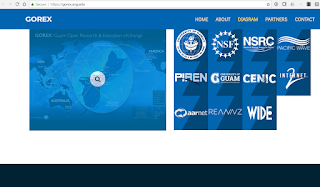Broadcom is introducing a new approach to Ethernet switch configuration that makes use of open source software to allow network hard vendors, OS vendors and even enterprise network managers to monitor, analyze, and provision switch resources through a standard software interface.
 This capability is enabled by a new Software Development Kit Logical Table (SDKLT) for Broadcom switch ASICs that leverages table-based programming, where all the device physical resources such as MAC Address Tables, L3 route tables, TCAMs, etc. are exposed as logical tables. Device-specific information is stored in databases and not embedded in the APIs. Device-specific behavior is managed by logical tables through a small set of APIs. Broadcom said this approach introduces new ways to monitor, analyze and provision switch resources, all through industry standard automation tools. The company is making this logical table programmability available as an open source SDK.
This capability is enabled by a new Software Development Kit Logical Table (SDKLT) for Broadcom switch ASICs that leverages table-based programming, where all the device physical resources such as MAC Address Tables, L3 route tables, TCAMs, etc. are exposed as logical tables. Device-specific information is stored in databases and not embedded in the APIs. Device-specific behavior is managed by logical tables through a small set of APIs. Broadcom said this approach introduces new ways to monitor, analyze and provision switch resources, all through industry standard automation tools. The company is making this logical table programmability available as an open source SDK.
Broadcom's first open source offering of the SDKLT is for BCM56960 Tomahawk switch, which is widely used in data center top-of-rack (TOR) switches. The SDKLT open source code is posted on GitHub. The open source code and the Logical Table APIs are released under Apache 2.0 license. The software is designed for High Availability (HA) including support for Soft Error Recovery, Warmboot, and In Service Upgrades.
“The SDKLT brings a fresh, state-of- the-art software development approach to the broader community of network software developers where they can now fully and directly control and monitor the rich switch feature set optimized for SDN and cloud use cases,” said Ram Velaga, senior vice president and general manager of switching products.
 This capability is enabled by a new Software Development Kit Logical Table (SDKLT) for Broadcom switch ASICs that leverages table-based programming, where all the device physical resources such as MAC Address Tables, L3 route tables, TCAMs, etc. are exposed as logical tables. Device-specific information is stored in databases and not embedded in the APIs. Device-specific behavior is managed by logical tables through a small set of APIs. Broadcom said this approach introduces new ways to monitor, analyze and provision switch resources, all through industry standard automation tools. The company is making this logical table programmability available as an open source SDK.
This capability is enabled by a new Software Development Kit Logical Table (SDKLT) for Broadcom switch ASICs that leverages table-based programming, where all the device physical resources such as MAC Address Tables, L3 route tables, TCAMs, etc. are exposed as logical tables. Device-specific information is stored in databases and not embedded in the APIs. Device-specific behavior is managed by logical tables through a small set of APIs. Broadcom said this approach introduces new ways to monitor, analyze and provision switch resources, all through industry standard automation tools. The company is making this logical table programmability available as an open source SDK.Broadcom's first open source offering of the SDKLT is for BCM56960 Tomahawk switch, which is widely used in data center top-of-rack (TOR) switches. The SDKLT open source code is posted on GitHub. The open source code and the Logical Table APIs are released under Apache 2.0 license. The software is designed for High Availability (HA) including support for Soft Error Recovery, Warmboot, and In Service Upgrades.
“The SDKLT brings a fresh, state-of- the-art software development approach to the broader community of network software developers where they can now fully and directly control and monitor the rich switch feature set optimized for SDN and cloud use cases,” said Ram Velaga, senior vice president and general manager of switching products.














































